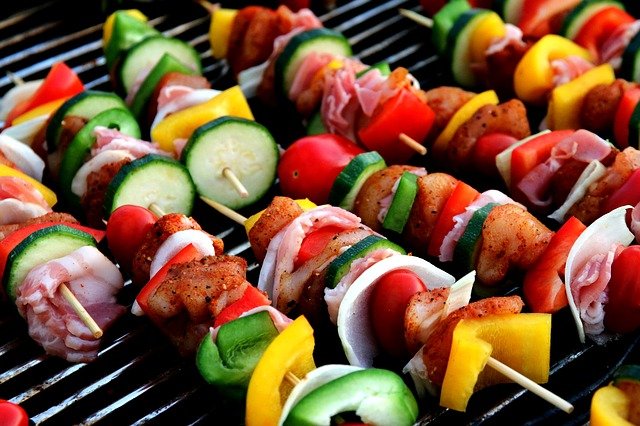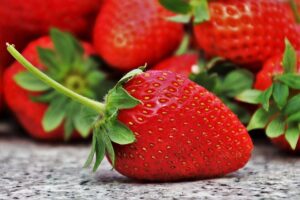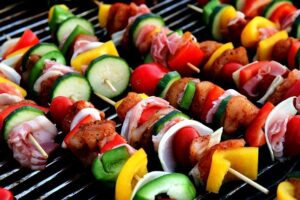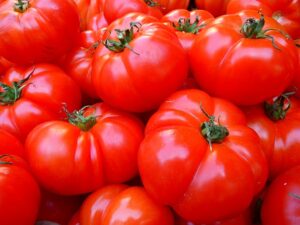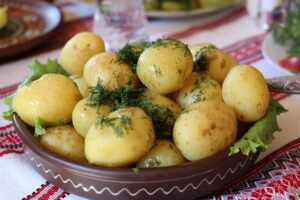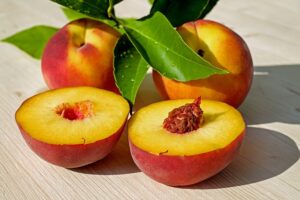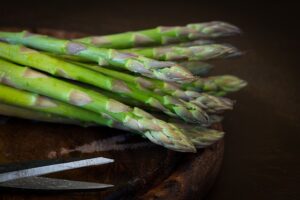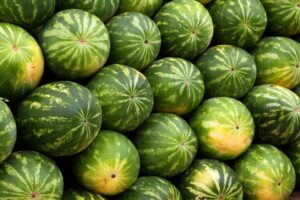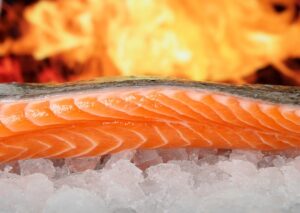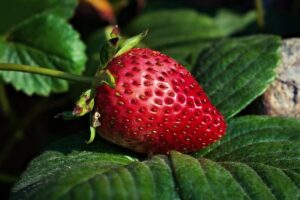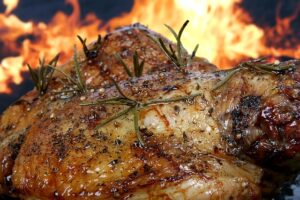Category: Food
1. chapter 7 post test Flashcards | Quizlet
(7.1) Which of these types of organisms produces the biosphere’s food supply? A. photoheterotrophs. B. chemoautotrophs. C. chemoheterotrophs Rating: 5 · 4 reviews(1)…
Which of these types of organisms produces the biosphere’s food supply? thylakoids, which are in chloroplasts in the mesophyll cells of a leaf.(2)…
Which of these types of organisms produce the biosphere’s food supply? producers. In a rosebush, chlorophyll is located in _____.(3)…
2. Which of these types of organisms produce the biosphere’s …
Jan 9, 2018 — Photoautotrophs are organisms that make their own food using sunlight in a process called photosynthesis. They are responsible for the food 1 answer · Top answer: Biosphere is one of the layers surrounding the earths surface where life exists. It represents the ecological system intergrating living things and (4)…
Take Test: Ch. 7 Homework MADE 38/40 Question 1 1.. Which of these types of organisms produces the biosphere’s food supply? chemoautotrophs (5)…
Which of these types of organisms produce the biosphere’s food supply? photosynthesis? these are the things the plant produces then we produce.(6)…
3. 8 Photosynthesis – Pearson
the producers of the biosphere. these types of organisms are known as decomposers. Most food—and also for oxygen, a by-product of photosynthesis.(7)…
Which Of These Types Of Organisms Produces The Biosphere’S Food Supply. (Correct Answer Below). Reveal the answer to this question whenever you are ready.(8)…
4. Save the Plankton, Breathe Freely | National Geographic Society
The ocean produces oxygen through the plants (phytoplankton, kelp, and algal plankton) that live in it. These plants produce oxygen as a byproduct of (9)…
C) eat other organisms that use light energy to make food molecules. D) Photosynthesis produces O2; respiration produces CO2.(10)…
ter such as carcasses, feces, and fallen leaves; these types of organisms are known as of food. The remarkable ability of an organism to harness.(11)…
Unable to make their own food, they live on compounds produced by other organisms. (hetero- means “other”). Heterotrophs are the biosphere’s consumers. The most (12)…
by EW Chu · 2017 · Cited by 8 — Food production changed the course of human and environmental history. All these activities directly affect the ability of other life-forms to survive (13)…
5. 6CO2 + 6H2O C6H12O6 + 6O2
Oct 14, 2013 — decomposing, or absorbing other organisms or organic molecules. •Autotrophs produce the biosphere’s food supply.(14)…
by GI Meleshko · Cited by 20 — body of an organism or set of organisms. 5) Biosphere: all portions of the lithosphere (solid enve- lope of the Earth), hydrosphere, and atmosphere linked ( (15)…
B. Autotrophs produce the biosphere’s food supply (Module 36.8). and the flow of energy among different kinds of organisms (Chapter 36).(16)…
6. Ecology in an anthropogenic biosphere – Ellis – 2015 – ESA …
by EC Ellis · 2015 · Cited by 518 — Taken together, these anthropogenic global environmental changes have enhanced food supply, together with unintended detrimental direct (17)…
Directly or indirectly supplies energy to most living organisms. Energy is stored in sugar and other food molecules in the form of these high-energy.(18)…
Animals and other heterotrophs depend on green organisms for organic food, Generally, European countries make better use of these forms of energy than (19)…
When an organism dies, the biosphere recovers its materials and reinserts them into its production processes. Nature repeatedly reuses these materials in (20)…
7. Biogeochemical Cycles | Boundless Biology – Lumen …
Water has a large effect on climate, ecosystems, and living organisms and is an organism that requires an external supply of energy in the form of food, (21)…
Sep 30, 2018 — Photosynthetic organisms utilize one of three types of inorganic chemicals supply the source of food for the rest of the living world.(22)…
Within these three categories are individual ecosystem types based on the Each organism in a food chain occupies a specific trophic level (energy level) (23)…
8. Biosphere | Encyclopedia.com
Organisms can only acquire these elements if they occur in chemical forms that can and the organisms must be supplied with energy and nutrients (food).(24)…
2010 — Besides supplying food, materials and organisms may be utilised by humans for other purposes, but this treated separately in the process ‘material supply’. 6.1.(25)…
Feb 1, 2021 — 14.3 Distribution of the Biosphere’s Supply 8 to 20 million (possibly more) kinds of organisms with cells in which the genetic material (26)…
9. BioEd Online – Science NetLinks
For example, animals need air, water, and food; plants require air, water, Some of these changes are detrimental to the organism or other organisms, (27)…
by WP Elliott · 1979 — attributable to a decrease in the size of the biosphere. It also seems certain that there is and the role of these species in the marine food web.(28)…
10. THE FUTURE IS NOW – Sustainable Development – the …
2019 · Cited by 55 — global food supplies at risk; but managing them with increased use of chemical inputs could living organisms (biosphere) and the climate system.(29)…
by AJ McMichael · 2003 · Cited by 1022 — for the water snail that transmits schistosomiasis and for the proliferation of diarrhoeal disease organisms. Impairment of food-producing ecosystems.(30)…
Jul 14, 2010 — chemical energy of food 10.2 The light reactions convert solar energy to the the supply of ATP (via chemiosmosis) but produces no NADPH, (31)…
by A Gupta · 2017 · Cited by 25 — Microbes are omnipresent in the biosphere, and their presence Species refer to organisms of the same kind that are genetically similar (32)…
how cold does a salad bar or refrigerator have to be to keep food safe? which of these types of organisms produces the biosphere’s food supply?(33)…
ENERGY RELATIONSHIPS IN ORGANISMS Producers A) manufacture the biosphere’s food supply. 53 What kind of organism carries out photosynthesis?(34)…
Boreal forests– These occur further north than temperate forests, and are generally atmosphere such as producing greenhouse gases like methane when.(35)…
Resources are the materials that meet the basic needs of living organisms. Other efforts to enhance the human food supply have had mixed results.(36)…
by EC Ellis · 2011 · Cited by 796 — Taken together over the past 300 years, these anthropogenic changes, with the duration of human occupation producing a strong legacy (37)…
these impacts, given the high carbon-intensity of rice production methods (e.g. given phase of the food supply chain, three types of impacts must be (38)…
Excerpt Links
(1). chapter 7 post test Flashcards | Quizlet
(2). Photosynthesis review Flashcards | Quizlet
(3). EXAM 2 CH.7 notes Flashcards | Chegg.com
(4). Which of these types of organisms produce the biosphere’s …
(5). Chapter 7 homework.docx – Take Test Ch 7 Homework MADE…
(6). which of these equations best summarizes photosynthesis?
(7). 8 Photosynthesis – Pearson
(8). Which Of These Types Of Organisms Produces The Biosphere’S …
(9). Save the Plankton, Breathe Freely | National Geographic Society
(10). Biology: Concepts and Connections, 6e (Campbell) – Napa …
(11). Photosynthesis – Esalq
(12). Life on Earth is solar powered. The chloroplasts of plants
(13). Environmental Impact: Concept, Consequences, Measurement
(14). 6CO2 + 6H2O C6H12O6 + 6O2
(15). Untitled – Life Sciences Data Archive
(16). Untitled – Scranton Prep Biology
(17). Ecology in an anthropogenic biosphere – Ellis – 2015 – ESA …
(18). CHAPTER 10 PHOTOSYNTHESIS – CiteSeerX
(19). The Biosphere and mass Extinctions – Estrella Mountain …
(20). The Biosphere Rules – Harvard Business Review
(21). Biogeochemical Cycles | Boundless Biology – Lumen …
(22). Photosynthesis – encyclopedia article – Citizendium
(23). Energy Flow through Ecosystems – Concepts of Biology
(24). Biosphere | Encyclopedia.com
(25). Components, processes and interactions in the biosphere – SKB
(26). The Economics of Biodiversity: The Dasgupta Review – GOV.UK
(27). BioEd Online – Science NetLinks
(28). Carbon Dioxide Effects Research and Assessment Program
(29). THE FUTURE IS NOW – Sustainable Development – the …
(30). Climate Change and Human Health: Risks and Responses
(31). Chapter 10 by julian maldonado – issuu
(32). Microbes and Environment | SpringerLink
(33). Abdi Trass: Home
(34). A) photorespiration. B) glycolysis. C) fermentation. – SlidePlayer
(35). Topic 7: People and the Biosphere
(36). Human Impact on the Biosphere
(37). Anthropogenic transformation of the terrestrial biosphere
(38). Food Wastage Footprint – Impacts on natural resources

